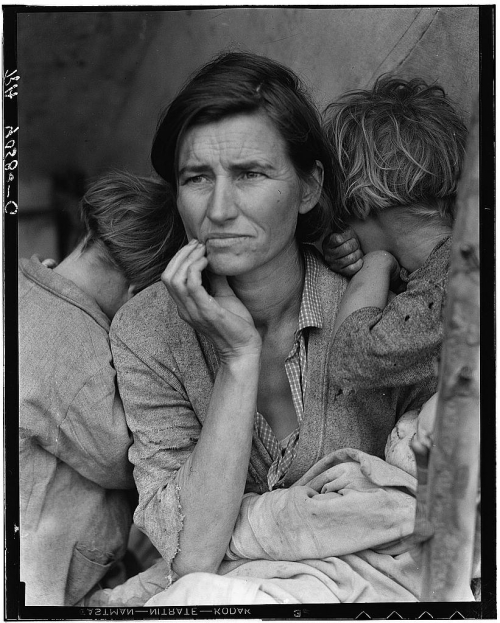Dorothea Lange
b. 1895, Hoboken, New Jersey; d. 1965, San Francisco
Social-documentary photographer Dorothea Lange is best known for her haunting—and now iconic—portraits of migrant workers during the Great Depression. She studied photography at Columbia University with Clarence H. White and in 1919 opened a portrait studio in San Francisco. When the Depression began, she photographed the signs of economic decline around the city and, in 1935, was hired by the Resettlement Administration (later the Farm Security Administration, FSA) to document the condition of agricultural workers displaced by the Dust Bowl. These images were published in An American Exodus: A Record of Erosion (1939), with text by her husband, the economist Paul Taylor. In 1941, she received a Guggenheim Fellowship, which she used to document the detention of Japanese Americans during World War II. After the war, until 1951, illness prevented her from working. In the mid-fifties, she was a photographer for Life magazine. Numerous exhibitions have been devoted to her work, including a 1966 retrospective at the Museum of Modern Art in New York.

Dorothea Lange. Destitute pea pickers in California. Mother of seven children. Age thirty-two. Nipomo, California, known as Migrant Mother, 1936. Library of Congress, Prints and Photographs Division, Washington, D.C.
Related Place Setting
Related Heritage Floor Entries
- Dorothy Arzner
- Marie Bashkirtsev
- Sarah Bernhardt
- Rosa Bonheur
- Julia Cameron
- Emily Carr
- Mary Cassatt
- Imogen Cunningham
- Sonia Delaunay
- Maya Deren
- Isadora Duncan
- Eleanor Duse
- Edith Evans
- Natalia Goncharova
- Martha Graham
- Eileen Gray
- Sophia Haydn
- Katharine Hepburn
- Barbara Hepworth
- Hannah Hoch
- Harriet Hosmer
- Frida Kahlo
- Ida Kaminska
- Gertrude Kasebier
- Kathe Kollwitz
- Marie Laurencin
- Mary Louise McLaughlin
- Paula Modersohn-Becker
- Julia Morgan
- Berthe Morisot
- Gabriele Münter
- Louise Nevelson
- Elizabeth Ney
- Anna Pavlova
- Augusta Savage
- Sophie Taeuber-Arp
- Suzanne Valadon